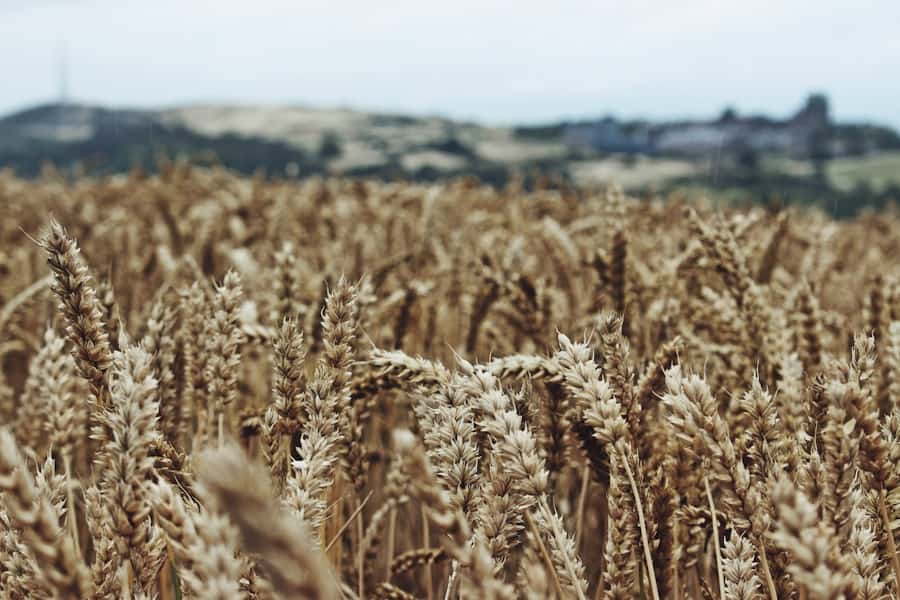Biotechnology in agriculture represents a transformative approach to food production, leveraging scientific advancements to enhance crop performance, resilience, and nutritional value. This field encompasses a range of techniques, including genetic engineering, molecular markers, and tissue culture, all aimed at improving agricultural practices and outcomes. As the global population continues to rise, projected to reach nearly 10 billion by 2050, the demand for food is escalating.
Traditional agricultural methods alone may not suffice to meet this growing need, prompting the exploration of biotechnological solutions that can increase efficiency and sustainability in food production. The integration of biotechnology into agriculture has the potential to address several pressing challenges, including climate change, soil degradation, and pest resistance. By harnessing the power of genetic modification and other biotechnological tools, researchers and farmers can develop crops that are not only more productive but also better equipped to withstand environmental stresses.
This innovative approach is particularly crucial in regions where agricultural productivity is hampered by adverse conditions, such as drought or nutrient-poor soils. As we delve deeper into the various applications of biotechnology in agriculture, it becomes evident that these advancements are not merely enhancements but essential components of a resilient food system.
Key Takeaways
- Biotechnology plays a crucial role in improving agriculture by addressing malnutrition and enhancing crop resilience and yield.
- Genetic modification of crops can lead to improved nutrition and biofortification, helping to combat malnutrition in vulnerable populations.
- Biofortification and nutrient enrichment through biotechnology can increase the nutritional value of crops, contributing to better health outcomes.
- Biotechnology also plays a key role in improving crop resilience and yield, helping to ensure food security in the face of climate change and other challenges.
- Despite challenges and controversies, the future of biotechnology in tackling malnutrition looks promising, with ongoing research and innovation driving progress in sustainable agriculture.
Addressing Malnutrition through Biotechnology
The Scope of the Problem
The World Health Organization estimates that approximately 2 billion people suffer from micronutrient deficiencies, which can lead to severe health consequences such as stunted growth in children and increased susceptibility to diseases.
Biotechnology as a Solution
Biotechnology offers promising solutions to combat these nutritional challenges by enhancing the nutritional profile of staple crops that form the backbone of many diets. One of the most notable contributions of biotechnology in addressing malnutrition is the development of biofortified crops. These crops are engineered to contain higher levels of essential vitamins and minerals, thereby providing a more nutritious food source for populations that rely heavily on a limited variety of staples.
Success Stories: Golden Rice
For instance, Golden Rice has been genetically modified to produce beta-carotene, a precursor to vitamin A.
By incorporating such biofortified crops into local diets, communities can significantly improve their nutritional intake without requiring drastic changes in eating habits.
Genetic Modification of Crops for Improved Nutrition
Genetic modification (GM) has emerged as a powerful tool in the quest for improved nutrition in crops. Through precise alterations at the genetic level, scientists can enhance specific traits that contribute to the nutritional value of food. This process often involves the introduction of genes from other organisms that confer beneficial characteristics, such as increased vitamin content or improved amino acid profiles.
The ability to tailor crops for enhanced nutrition not only addresses immediate dietary deficiencies but also promotes long-term health benefits for consumers. A prime example of genetic modification for improved nutrition is the development of high-oleic soybeans. These soybeans have been engineered to produce oil with a healthier fatty acid profile, containing higher levels of monounsaturated fats and lower levels of saturated fats.
This modification not only benefits consumers by providing healthier cooking oil options but also supports food manufacturers seeking to create products with better nutritional profiles. Additionally, research into genetically modified legumes has led to varieties with increased protein content and improved digestibility, further contributing to enhanced nutrition for populations that rely on these crops as primary protein sources.
Biofortification and Nutrient Enrichment
Biofortification is a strategic approach that focuses on increasing the nutritional value of staple crops through conventional breeding or biotechnological methods. Unlike fortification, which involves adding nutrients during processing, biofortification aims to enhance nutrient levels directly within the plant itself. This method is particularly advantageous in regions where access to diverse foods is limited, as it allows for the cultivation of nutrient-rich crops that can be grown locally and consumed directly.
One successful example of biofortification is the development of iron-rich beans in Rwanda and other East African countries. These beans have been bred to contain significantly higher levels of iron compared to traditional varieties. Given that iron deficiency is a leading cause of anemia in many developing nations, the introduction of these biofortified beans has had a profound impact on public health.
Studies have shown that incorporating iron-rich beans into local diets can lead to measurable improvements in hemoglobin levels among populations at risk of anemia. Such initiatives highlight the potential of biofortification as a sustainable solution to combat micronutrient deficiencies.
Improving Crop Resilience and Yield
In addition to enhancing nutritional content, biotechnology plays a crucial role in improving crop resilience and yield. As climate change continues to pose significant threats to agricultural productivity through increased temperatures, altered precipitation patterns, and more frequent extreme weather events, developing crops that can withstand these challenges is imperative. Biotechnological innovations enable scientists to create varieties that are more resilient to drought, salinity, pests, and diseases.
For instance, researchers have developed drought-tolerant maize varieties through genetic modification. These crops possess traits that allow them to maintain yield stability even under water-limited conditions. Field trials have demonstrated that these drought-tolerant maize varieties can yield up to 30% more than conventional varieties during periods of drought.
Such advancements not only enhance food security but also provide farmers with greater economic stability by reducing crop losses due to environmental stressors.
Biotechnology’s Role in Sustainable Agriculture
Sustainable agriculture seeks to balance the need for food production with environmental stewardship and social equity. Biotechnology contributes significantly to this goal by promoting practices that reduce reliance on chemical inputs and enhance resource efficiency. For example, genetically modified crops that are resistant to pests can decrease the need for chemical pesticides, leading to lower environmental impact and reduced costs for farmers.
Moreover, biotechnology can facilitate conservation agriculture practices by enabling no-till farming methods. Crops engineered for herbicide tolerance allow farmers to control weeds without disturbing the soil structure through tillage. This practice not only preserves soil health but also enhances carbon sequestration, contributing positively to climate change mitigation efforts.
By integrating biotechnology into sustainable agricultural practices, farmers can achieve higher yields while minimizing their ecological footprint.
Overcoming Challenges and Controversies
Despite its potential benefits, biotechnology in agriculture faces numerous challenges and controversies that must be addressed for its widespread adoption. Public perception plays a significant role in shaping policies and acceptance of genetically modified organisms (GMOs). Concerns about food safety, environmental impact, and corporate control over seeds have fueled skepticism among consumers and advocacy groups alike.
Misinformation surrounding GMOs often complicates discussions about their safety and efficacy. Regulatory frameworks also present challenges for biotechnological innovations in agriculture. The approval process for genetically modified crops can be lengthy and costly, deterring investment in research and development.
In some regions, stringent regulations may hinder the introduction of beneficial biotechnological advancements that could alleviate malnutrition or improve crop resilience. To overcome these challenges, it is essential for stakeholders—including scientists, policymakers, farmers, and consumers—to engage in transparent dialogue about the benefits and risks associated with biotechnology in agriculture.
The Future of Biotechnology in Tackling Malnutrition
Looking ahead, the future of biotechnology in addressing malnutrition appears promising yet complex.
The potential for precision breeding techniques and gene editing technologies like CRISPR offers exciting prospects for creating crops with enhanced nutritional profiles while minimizing unintended consequences.
Collaboration among governments, research institutions, non-governmental organizations (NGOs), and local communities will be crucial in realizing the full potential of biotechnology in combating malnutrition. By fostering partnerships that prioritize local needs and knowledge systems, stakeholders can ensure that biotechnological advancements are accessible and beneficial to those who need them most. As we navigate the complexities of global food systems and strive for sustainable solutions, biotechnology will undoubtedly play a pivotal role in shaping a healthier future for all.
Biotechnology is revolutionizing agriculture by improving crop yields and nutritional content to combat malnutrition. One related article that delves into the technological advancements in agriculture is The Best Shared Hosting Services in 2023. This article discusses how technology is shaping various industries, including agriculture, to meet the growing demands of a changing world. By utilizing the best software tools, such as those highlighted in Best Software to Create Training Videos, farmers and researchers can collaborate more effectively to develop innovative solutions for improving food security and nutrition. To learn more about how biotechnology is transforming agriculture, contact us at Enicomp.
FAQs
What is biotechnology in agriculture?
Biotechnology in agriculture refers to the use of scientific techniques to modify living organisms, such as plants and animals, to improve their traits or characteristics. This can include genetic engineering, molecular markers, and tissue culture.
How is biotechnology improving agriculture?
Biotechnology is improving agriculture by developing crops that are more resistant to pests and diseases, have higher nutritional value, and can thrive in harsh environmental conditions. This helps to increase crop yields and improve food security.
How is biotechnology being used to tackle malnutrition?
Biotechnology is being used to develop crops with enhanced nutritional content, such as biofortified crops that are rich in essential vitamins and minerals. These crops can help address malnutrition by providing better access to nutritious food.
What are some examples of biotechnology improving agriculture to tackle malnutrition?
Examples of biotechnology improving agriculture to tackle malnutrition include the development of biofortified crops like vitamin A-rich golden rice, iron and zinc-rich beans, and vitamin A-rich sweet potatoes. These crops can help address specific nutrient deficiencies in populations at risk of malnutrition.
Are there any concerns or risks associated with biotechnology in agriculture?
Some concerns associated with biotechnology in agriculture include potential environmental impacts, such as the development of herbicide-resistant weeds, and the potential for unintended effects on non-target organisms. Additionally, there are concerns about the long-term health effects of consuming genetically modified organisms (GMOs). Regulatory frameworks and thorough risk assessments are in place to address these concerns.



